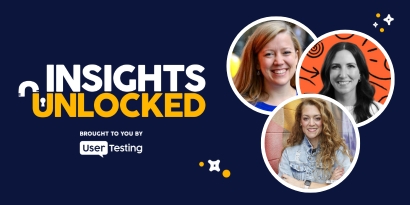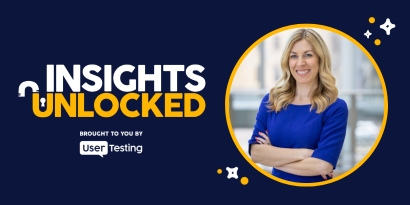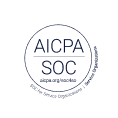
Episode 7 | November 02, 2020
How UX Shapes Employee Experience (EX) and Customer Experience
Discover how UX principles shape employee experience (EX) and customer experience (CX). Learn how nudges and behavioral science improve workplace engagement!
Why employee experience (EX) is the next big thing in UX and CX
“If you create a great employee experience, it naturally leads to a better customer experience.” — Marieke McCloskey
Think about the last time you had an amazing customer experience. Was it because the product was perfect, or was it because the person behind it—whether a support agent, designer, or engineer—was engaged and motivated? The reality is, employee experience (EX) directly impacts customer experience (CX). Happy employees build better products, offer better service, and contribute to stronger brands.
In a recent episode of UserTesting's podcast, Janelle Estes, formerly Chief Insights Officer at UserTesting, sat down with Marieke McCloskey to discuss the evolving role of user experience (UX) in shaping EX and CX. They explored how behavioral science, nudge theory, and personalization are transforming the way companies engage their employees and, in turn, improve customer interactions.
Why employee experience matters more than ever
Companies have long focused on optimizing customer experience—investing in UX research, fine-tuning marketing strategies, and refining digital experiences. But the pandemic brought employee experience (EX) to the forefront. With the rise of remote and hybrid work, organizations are realizing that EX is just as crucial as CX in driving business success.

McCloskey shared a compelling insight:
“So many of the same principles we apply to UX—research, testing, iteration—are exactly what we need to create better employee experiences.”
What does this mean in practice? Just like companies study customer pain points, they need to assess employee frustrations. Just as UX designers focus on making products intuitive, HR teams must ensure that workplace processes are smooth, engaging, and rewarding.
The intersection of UX, CX, and EX
At first glance, user experience (UX) and employee experience (EX) might seem like separate domains. UX is about designing intuitive interfaces and seamless interactions, while EX is about workplace culture and HR policies. But the parallels between UX, CX, and EX are undeniable.
McCloskey explained:
“The same metrics that matter in UX and CX—engagement, retention—are key in EX as well. Whether you're designing a product or a workplace experience, keeping people engaged is the goal.”
The shared metrics of UX, CX, and EX
| Metric | UX (User Experience) | CX (Customer Experience) | EX (Employee Experience) |
|---|---|---|---|
| Engagement | Are users interacting with the product? | Are customers staying engaged with the brand? | Are employees motivated and involved? |
| Retention | Do users return to the app or site? | Do customers keep buying? | Do employees stay with the company? |
| Satisfaction | Is the product enjoyable to use? | Are customers happy with their experience? | Are employees satisfied at work? |
By treating employees as internal users, companies can leverage UX methodologies to enhance workplace engagement, reduce turnover, and build a stronger culture.
How behavioral science and nudging improve EX
One of the most exciting developments in EX is the use of behavioral science and nudge theory. Nudges are small, subtle prompts that encourage people to make better decisions without forcing them.
McCloskey shared an example from her time at Google:
“At Google, they experimented with nudging employees toward healthier choices by simply rearranging snacks. Less healthy options were placed in opaque containers, while fruit was made more visible. People naturally made healthier choices without any strict rules in place.”
Consider applying nudge theory to workplace behaviors. Imagine a system that gently reminds managers to recognize employees for their hard work or encourages team members to let others speak in meetings. These small nudges drive meaningful cultural change over time.
The impact of remote work on employee experience
The shift to remote and hybrid work has drastically altered employee expectations. A recent UserTesting study found that 88% of employees want to continue working from home post-pandemic. When asked why, employees cited:
- Safety concerns related to the COVID-19 virus
- Improved work-life balance
- Elimination of commute-related stress
McCloskey acknowledged the complexity of this shift:
“We’re in such an emotional time right now. It’s hard to predict exactly how work will look in five years, but companies need to start listening and adapting.”
Organizations that prioritize flexibility and personalization will be better positioned to retain top talent.
Best practices for improving EX (and why CX will benefit too)
What can companies do to enhance EX while ensuring it positively impacts CX? McCloskey shared some actionable takeaways:
1. Apply UX principles to EX
Think of employees as internal users. Use UX research techniques like journey mapping, usability testing, and surveys to understand their needs and pain points.
"So many decisions in startups happen quickly. Having a UX researcher from the start helps companies gut-check ideas with real employee feedback."
2. Personalize the employee experience
Just as companies tailor customer interactions, they should personalize employee benefits and career development.
McCloskey pointed to Sephora as a leader in EX innovation:
“Sephora applied the exact same personalization strategies they use for customers to their employees—and it’s paying off.”
Examples of personalization in EX:
✅ Letting employees choose their benefits package based on their life stage
✅ Offering custom learning paths instead of generic training programs
✅ Adjusting nudges and feedback based on employee roles and career goals
3. Foster a culture of recognition
A small but high-impact way to boost EX is through better recognition practices.
“Instead of thanking everyone in a meeting generically, call out individual contributions. It makes recognition feel more meaningful.”
4. Embrace flexibility, but plan for change
Remote work is here to stay, but it will evolve. Companies need to listen to employees, test different policies, and remain adaptable.
McCloskey warns against making long-term decisions based on short-term emotions:
“People are still adjusting. Don’t assume that what employees want today will be the same five years from now.”
EX, CX, and UX are all connected
Companies that invest in employee experience aren’t just improving workplace culture—they’re strengthening customer experience and business outcomes too. Organizations like Humu and Sephora are proving that the future of work is human-centered.
As McCloskey summed it up:
“To me, it’s all user-centered design. Whether it’s a product or a workplace, it’s about having empathy for the people you’re designing for.”
If companies want to create great customer experiences, they must start by building better employee experiences. Because at the end of the day, engaged employees create products and services that customers love.
Episode links:
- What Is employee experience?: An overview of employee experience, detailing its significance and components.
- Why great CX begins with a stellar employee experience: This article discusses the connection between employee experience and customer experience, emphasizing the importance of a positive workplace culture.
- Enhancing employee portal experience with UX: Insights on improving internal web portals to boost employee engagement and productivity.
- A comprehensive overview of customer experience design: An in-depth look at designing customer interactions that meet or exceed expectations.










